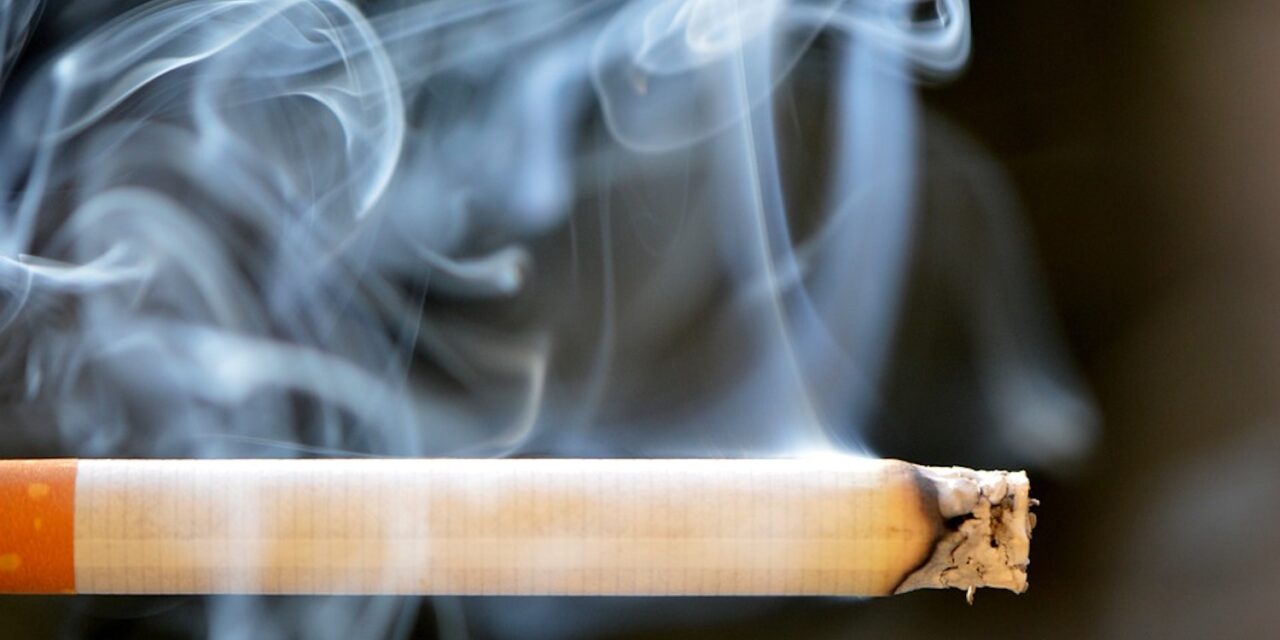(JNS)
A new study from Tel Aviv University (TAU) finds that smoking next to a nearby window or on the porch of a home does not protect most children from exposure to tobacco smoke.
Second Hand Smoke
In a study unique to Israel, the research team tested for the presence of nicotine in the hair of children whose parents smoke. Among parents who restrict smoking to a porch or outside the house, the findings are worrisome: Nicotine was still found in the hair of six out of 10 kids tested.

Cigarette smoke. Photo courtesy of Pixabay.
“In Israel, home porches should be regarded as part of the environment of the home,” the researchers say. “Smoking next to a window or in another specific place in the home does not protect most children from exposure. Our recommendations are unequivocal: To reduce children’s exposure to tobacco smoke, smoking should be entirely avoided within a range of 10 meters [30 feet] from the house. Likewise, in open areas, smokers should maintain a distance of at least 10 meters from the children.”
The study was led by Leah (Laura) Rosen of the School of Public Health in TAU’s Sackler Faculty of Medicine. It was published on Feb. 16 in the International Journal of Environmental Research and Public Health.
The team tested children’s level of tobacco-smoke exposure by testing hair samples of children for the presence of nicotine, which provides an estimate of the amount of exposure over a time period of several months. Analysis of the data showed that among families that restricted smoking to a porch or outdoors and did not smoke inside the house, 62% of the children were exposed to tobacco smoke.
“Smoking outside the house, even when the doors and windows are fully closed, does not completely protect children from exposure to tobacco smoke,” says Rosen. “The Israeli situation is of great concern because in many cases, porches in Israel are directly adjacent to living areas and may even be partially open some of the time; the proximity allows smoke to drift from those areas to the interior of the house.”
Supreme Court Weighs Hazard
She explains that parents mistakenly believe that a porch is “safe,” being that it’s open to the air. But smoke drifts into the home, and once there, is absorbed into the environment—furniture, walls, rugs—and is then gradually discharged into the air over weeks or months. The researchers say that the smoke i can be absorbed into the body from the environment via swallowing or through the skin, especially among infants and small children.
Rosen notes that this new information is directly relevant to a case currently being heard in Israel’s Supreme Court. An appeal against the Ministries of the Environment, Health and Interior concerns the tobacco smoke that penetrates apartments as an environmental hazard—a claim supported by the definition of an environmental hazard in the Clean Air Law, the Hazard Prevention Law and the Penal Code.
“The Health Ministry’s approach, which opposes protection for individuals from smoke incursion into their own homes in order to protect the smokers’ children, does not protect the children of smokers, and it can also cause substantial harm to neighbors and the children of neighbors,” says Rosen. “We are asking the Health Ministry to reconsider its stand in light of these findings.”
Other participants in the study include David Zucker of the Hebrew University of Jerusalem; Shannon Gravely of Waterloo University; Michal Bitan of TAU; Anna Rule of Johns Hopkins Bloomberg School of Public Health; and Vicki Meyers of the Sheba Medical Center.







